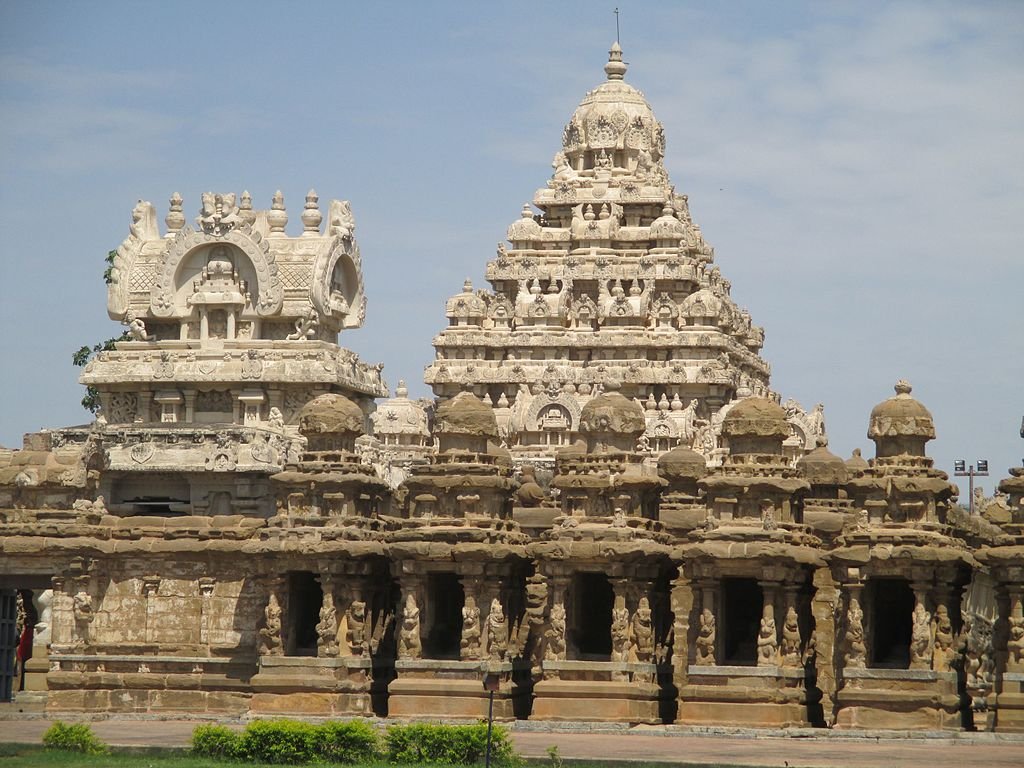MessageToEagle.com – The famous Kailashanatha Temple in Kanchipuram, Tami Nadu India, was built in the 8th century during the reign of a South Indian Pallava Dynasty (275 CE to 897 CE).
It is the largest temple built by the Pallavas, who became passionate temple builders. These kings were the first to build stone temples in the Tamil country and later experimented in carving temples in stone.

Dedicated to the Lord Shiva, Kailashanatha Temple (means “Lord of the Cosmic Mountain”), was built in the tradition of temples that celebrate the cosmic mountain with the summit, which is not only the highest point of the earth but also the earth’s navel, the point at which the Creation began.
Kailashanatha Temple is the oldest in Kanchipuram, a former Pallava capital (7th – 9th century) and one of the seven sacred cities under Hinduism. The city is approx. 75 kilometers (47 mi) from the Chennai, the capital city of Tamil Nadu.
See also:
Mystery Of 1,000 Ancient Carved Shiva Lingas Discovered In India And Cambodia
Tiger Cave: Rock-Cut Hindu Temple Complex Dated To East India’s Pallava Empire
Gigantic Kailasa Temple Emerging From A Mountainside: Engineering Marvel Of India’s Master Builders
Some of the oldest books of the Sanskrit written about the 3rd or 2nd centuries BC, mention Kanchipuram, which is believed to have been part of the mythical Dravida Kingdom of the Mahabharatha.
The temple, of which architect is unknown, was commissioned by Narasimhavarman II commonly known as Rajasimha (r. 700 – 728 CE), a ruler of the Pallava kingdom, who is also credited with the construction of several other temples.
The structure is decorated with a large number of carvings, including many half-animal deities, especially popular during the early Dravidian architectural period.
There are 58 shrines, built into niches, which are dedicated to various forms of Shiva. The main shrine has a 16 sided Shivalinga carved in black granite. The Shivalinga in this temple is 10 feet high.
Perhaps the most remarkable and very unique feature of the temple is the so-called “circumambulatory passage”. This is a place of great symbols.
The passage enables moving around a sacred object or idol. After climbing seven steps to reach this mostly unusual passage, devotees must crawl through it.
The crawling has a symbolic meaning of great importance; it is namely similar to passing through the life cycle including aging process, death and rebirth.
Crawling and finally leaving the passage symbolize coming out of mother’s womb and also explains Hindu’s belief of rebirth.
Copyright © MessageToEagle.com All rights reserved. This material may not be published, broadcast, rewritten or redistributed in whole or part without the express written permission of MessageToEagle.com
Expand for references





